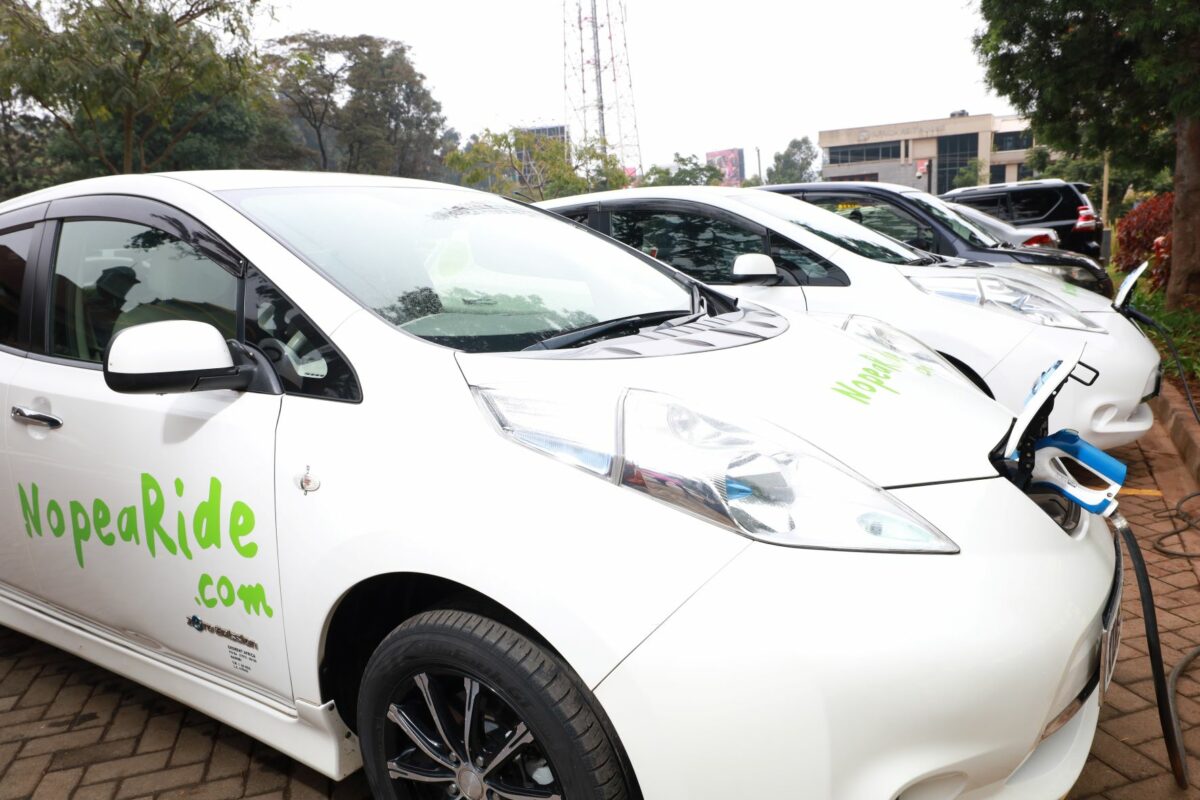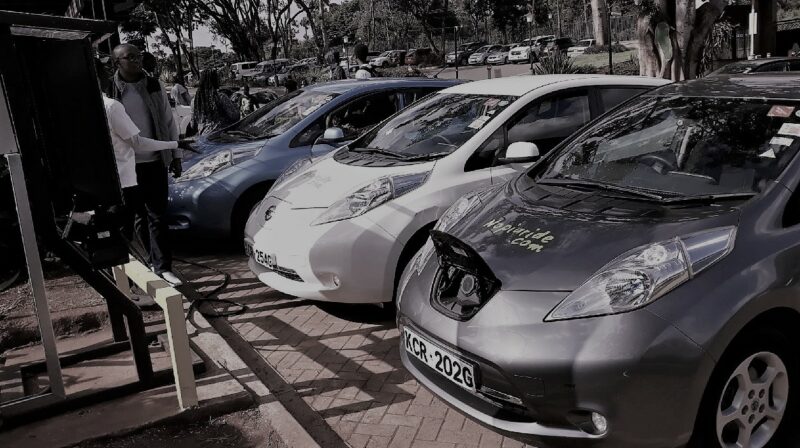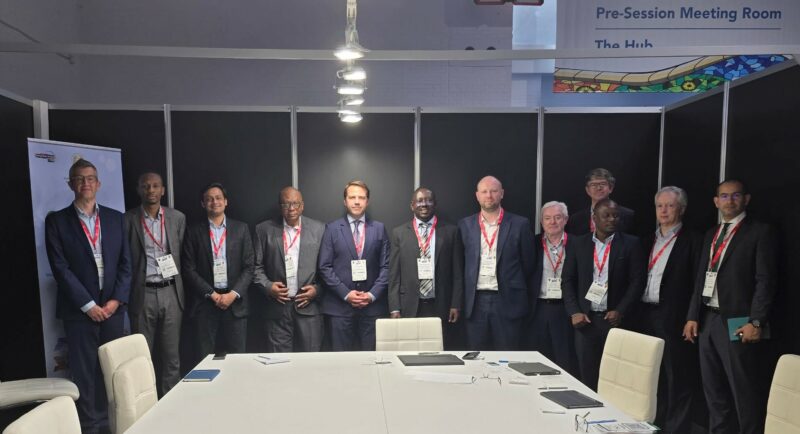Market insights: Electric mobility – driving a cleaner future for Africa’s cities
9th Sep 2021 | Leave a comment | By Julián Bermejo
I have lived in Nairobi since 2015 and – before the pandemic – would undertake my daily commute across town, negotiating heavy traffic and stifling air pollution which some studies suggest is thirty times worse than that in London[i]. With particulate matter pollution linked to 5,490 premature deaths in Kenya, in 2019 alone,[ii] there is a clear urgency to act.
It is a situation that unfortunately is not unique to Nairobi. Many African cities are experiencing a ‘perfect storm’ of spiralling traffic congestion and air pollution borne of population growth, improved GDP, and the inherent difficulty of planning and financing long-term traffic management or non-motorised public transport solutions. With estimates suggesting that these cities will become home to an additional 950 million people by 2050,[iii] city planners and investors are grappling with the challenge of sustaining economic growth and urban mobility whilst cutting emissions and improving local air quality.
Electric Vehicles (“EV”) offer one potential solution and so, on World EV Day, I would like to explore InfraCo Africa’s work in this space and talk about what electric mobility might mean for Africa’s wider transport system.
-

Air pollution and traffic congestion are common in Africa’s cities
Why go electric?
I led our investment into NopeaRide, Africa’s first all-electric taxi-hailing service. With our support, the company will expand from 30 to 100 vehicles and roll out new charging infrastructure across Nairobi: demonstrating the wider value of electric mobility to customers and investors so enabling NopeaRide to attract further investment and continue growing.
This is good for the planet…
Compared with petrol or diesel vehicles, electric vehicles drastically cut direct emissions of greenhouse gases and the ambient air pollutants driving climate change. Particularly when compared to the second-hand imported vehicles driven by many of Kenya’s taxi-drivers, which undergo few checks on their emissions, fuel efficiency or road-worthiness
…and good for people.
NopeaRide’s charging infrastructure is strategically placed to allow drivers to recharge near the most popular destinations – for example, in the car parks of shopping malls – which minimises the time and cost of refuelling. The running and maintenance costs of electric vehicles are also less than conventional combustion engines, so taxi drivers can earn 30% to 50% more which makes a significant difference to them and their families.
-

Convenient charging locations -

Easy-to-use charging infrastructure -

Zero-emissions transport
What are the challenges?
Despite the clear benefits, there are challenges to going electric. Chief among these is the upfront capital cost: electric vehicles are considerably more expensive to buy than those with combustion engines. Although the lower maintenance and running costs of electric vehicles also offset the comparatively higher purchase cost.
The balance may however be shifting.
As we have seen in the solar industry, electric vehicle battery prices are consistently declining, driven by dedicated production facilities and technological improvements. Researchers now anticipate that 550 km range electric vehicles, running on a lithium-ion battery, may have a similar cost to comparable internal combustion engine vehicle by 2023. Whilst it is difficult to predict the future accurately, there seems to be a general consensus that EV costs are becoming more competitive and that cost parity will be a reality within five or six years, particularly when considering the Total Cost of Ownership.[iv]
Legislative action also has a role to play. The Government of Kenya is exploring different ways to boost the domestic automotive industry, which may include restrictions on imports of second-hand petrol and diesel powered cars. Such changes in legislation could make imported EV vehicles more price competitive.
For NopeaRide, it is also hoped that offering drivers the option to rent-to-own their electric vehicles will enable them to buy the cars over time, using the enhanced income they can generate from driving for the company.
But what about charging?
Historically, electric vehicles have suffered from a poor public image: with some drivers concerned about how long it takes to charge a vehicle and its range on a single charge. Electric vehicles are also perceived as suited only to urban, low-speed environments and as therefore unsuitable for the challenging road conditions they may experience outside of African cities. These are practical concerns and consumer awareness issues that need to be addressed if we want to grow electric mobility on the continent.
In sub-Saharan Africa, the availability of public charging infrastructure for both four and two-wheeler electric vehicles is insufficient, particularly in urban areas where we would anticipate a greater concentration of users and demand for low-carbon public transport. It is here that we need to see increasing support for the industry from government, development finance institutions and private investors. This support will, I believe, help to bridge the infrastructure gap in the short to medium term as the industry expands and matures, particularly in emerging African markets.
From a climate perspective, the key consideration has to be how such charging infrastructure is powered. The majority of Kenya’s energy comes from renewable sources[v]. However this is not always the case elsewhere, if charging points draw from national grids which continue to rely upon fossil fuels, the increased demand for electric vehicles will merely move emissions elsewhere. EkoRent Nopea is therefore pioneering solar-powered charging hubs in Nairobi. They are also implementing technologies which allow the cars themselves to store energy, acting as mobile batteries which can feed this clean energy back into the grid or to other load centres, such as houses, as required.
And the batteries themselves?
There are currently four main types of batteries used in EVs and PHEV (Plug-in Hybrid EVs). As electric vehicle use increases, so too will the need for raw materials involved in the manufacture of these batteries – cobalt, lithium, nickel and graphite. Production and disposal of EV batteries is also a thorny issue!
We don’t have all the answers yet. However, there is a huge amount of innovation and intensive research and development going into improving battery technology and developing more sustainable solutions: for example, exploring second life applications for batteries and using off-grid renewable energy for charging.
Where do we go from here?
During the pandemic, Nairobi witnessed a temporary reduction in air pollution. I even caught a glimpse of Mount Kenya and Mount Kilimanjaro from the city for the first time in many years.
Without accurate air quality data, we cannot hope to retain this progress as the city reopens for business. With good data, we can put regulatory and planning tools in place, monitor their impact, learn, improve, and gradually drive down emissions and air pollution levels: using fuel efficiency targets and enforced air quality standards to change behaviours and stimulate new economic activity.
With targeted investment, good urban planning and technological innovation, I believe that there is considerable scope for the electric mobility sector to thrive in Africa: delivering cleaner taxis, buses, private cars and motorcycles. Investing in integrated, low carbon public transport systems, and safe walking and cycling infrastructure in the city will also be key, incentivising more people to make the move away from private cars. The shift must come soon if we are to achieve SDG 11 – Sustainable Cities and Communities – whilst also safeguarding lives and livelihoods in Africa’s increasingly polluted urban areas.
[i] https://www.theguardian.com/cities/2016/jul/10/no-escape-nairobi-air-pollution-sparks-africa-health-warning
[ii] https://www.stateofglobalair.org/data/#/health/plot
[iii] OECD/SWAC (2020), Africa’s Urbanisation Dynamics 2020: Africapolis, Mapping a New Urban Geography, West African Studies, OECD Publishing, Paris, https://doi.org/10.1787/b6bccb81-en.
[iv] https://autovista24.autovistagroup.com/news/bev-vs-ice-race-price-parity/
[v] https://data.worldbank.org/indicator/EG.ELC.RNEW.ZS?locations=KE
Leave a Reply
Related projects

Kenya: EkoRent Nopea
Accelerating access to clean transportation









